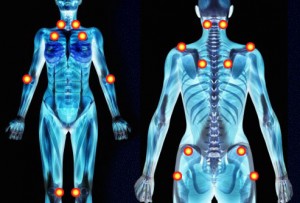I  recently completed my series of IMS/Dry Needling treatments and am moving forward in my life; now being a true “believer” of this therapy.
recently completed my series of IMS/Dry Needling treatments and am moving forward in my life; now being a true “believer” of this therapy.
What I take away from my journey into IMS/Dry Needling is that this procedure is not for everyone. I would absolutely encourage any one to come in shortly after an injury or accident. If your injury or pain is of recent origin, one treatment may be all that is necessary. The average person responds very well within 3 to 5 treatments.
For patients like me, having a life time of unhealthy habits…. this is a process that is more mental than physical.
IMS/Dry needling therapy has been very successful for me with chronic low back pain and sciatica symptoms. Needles were used to target specific muscles that had contracted and become shortened over years of a sedentary life style. These shortened muscles compress and irritate the nerves, and cause at times debilitating pain. My IMS/Dry Needling treatments greatly reduce tightness and pain, while increasing my flexibility and range of motion. The speed at which you regain movement and eliminate the pain is nothing short of a miracle.
An important note is needling on a normal muscle is painless. In contrast a shortened, muscle will ‘grasp’ the needle and produces a cramping sensation, and in some instances pain; although this sensation lasts only a few seconds. Intramuscular dry needling can reduce pain and soften these trigger points, while increasing flexibility and range of motion.
Myofascial pain is a chronic musculoskeletal pain disorder that can involve either a single muscle or a muscle group. It refers to pain and inflammation the body’s soft tissues. The pain associated with this condition can range from burning, stabbing, or an aching sensations. With myofascial pain , excessive strain on a particular muscle, muscle group, ligament or tendon can prompt the development of a “trigger point” and that, in turn, causes pain.
The Pros for considering IMS/dry needling: No down time | No side affects | Immediate results
The Cons for considering IMS/dry needling: This treatment can be painful | “Mentally” tiring if ongoing treatment is required
- your general health
- the duration and extent of your condition
- how much scar tissue you have
- how quickly your body can heal
- how much your body can take before you get tired
For more information about IMS/dry needling please contact Diversified Health Clinic.
*My Journey into IMS/Dry Needling | Part I
*My Journey into IMS/Dry Needling | Part II


